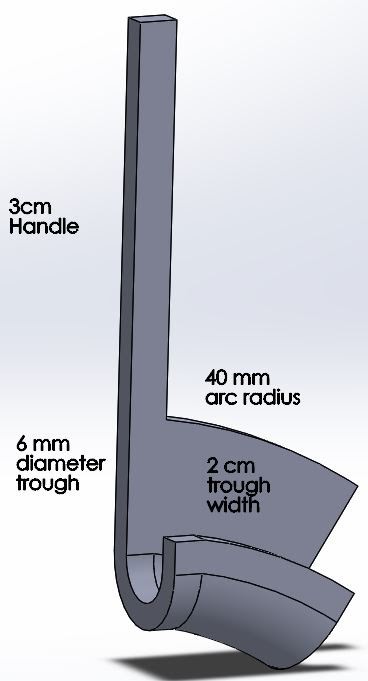
Team Members
Kale Friesen
Anna Olsen
Supervisors
Greg Gdowski, PhD, Biomedical Engineering UR, Amy Lerner, PhD, Biomedical Engineering UR, & Martin Gira, Senior Research Engineering UR
Customers
Michael Stoner, MD, UR Chief of Vascular Surgery
Description
Background
The vasSecure device is a vessel manipulator that controls the position and tension on the carotid artery, which lies deep in the neck, for surgeons performing a novel minimally invasive stenting procedure, known as transcarotid artery revascularization (TCAR), on patients with carotid artery disease (CAD). In this procedure, vascular surgeons need to access a fragile, unstable carotid artery that lies between one to four centimeters deep to external neck structures. Currently, they use a vessel loop to pull up on the artery to gain access and tension in order to insert the needles for the procedure, but this creates trauma to the vessel and difficulties for the surgeon. The vasSecure device allows for the surgeon to create tension, while not inflicting trauma, and access to the carotid artery during the TCAR procedure.
Clinical Need
Vascular surgeons need a way to access and stabilize the carotid artery during a transcarotid artery revascularization (TCAR) procedure to secure vessel location for instrument insertion without trauma to the vessel.
Intended Use
The vasSecure device is intended to be used during TCAR procedures to provide tension, maintain lumen geometry, and maintain stability of the carotid artery for all body types. The artery should be placed within the device trough, and once in place, the user should pull up on the device to create tension for instruments to be inserted into the lumen of the vessel.
Description of Device
The vasSecure device is a hook-like device that contains a trough to support the artery and deform the lumen geometry in a manner that still allows the surgeon to effectively perform the surgery. The handle of the device allows the user to pull up and create tension on the artery for instrument insertion. Additionally, the device features an attachment method to the incision and sterile site to stabilize the position of the device and artery.

